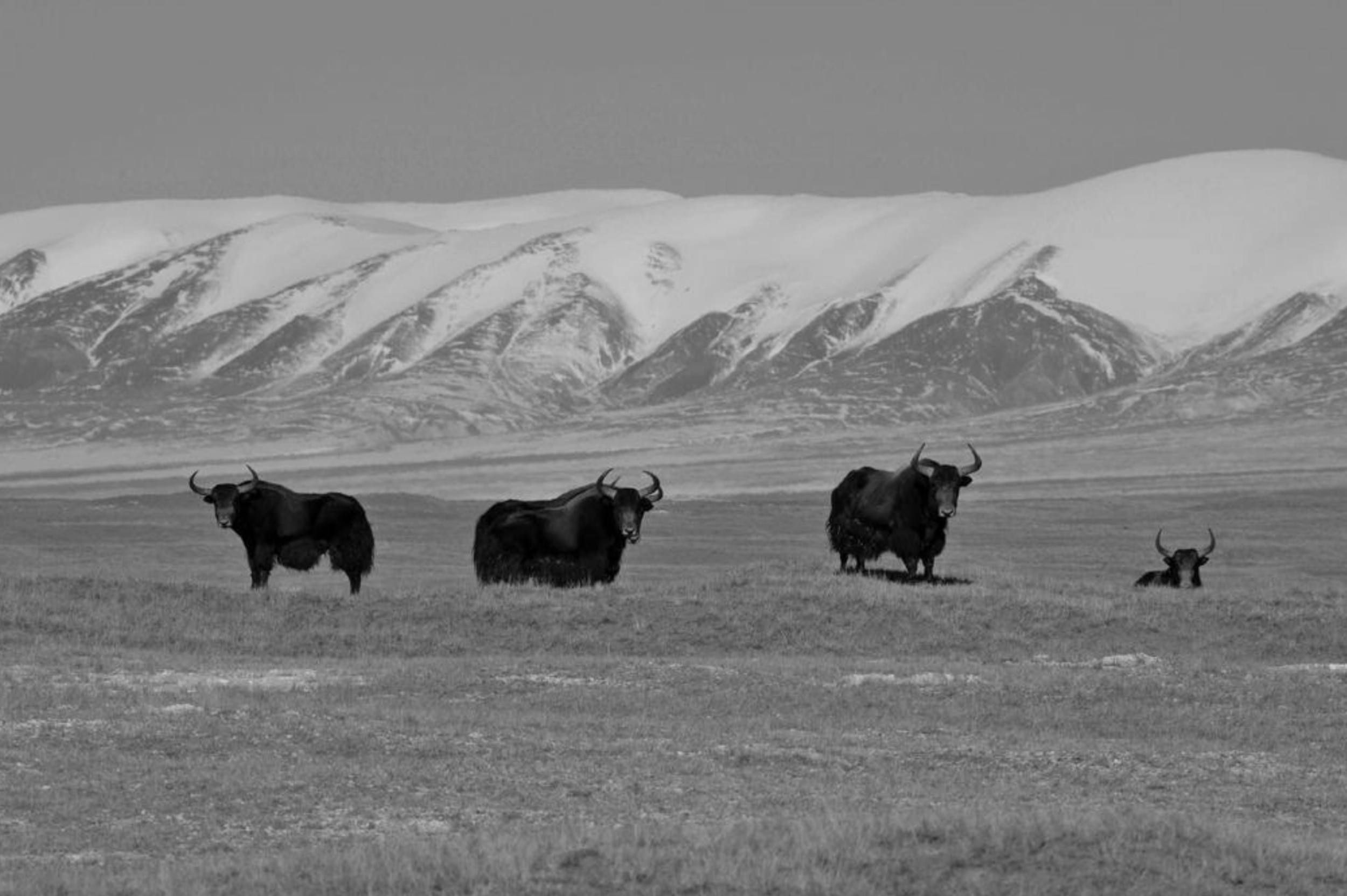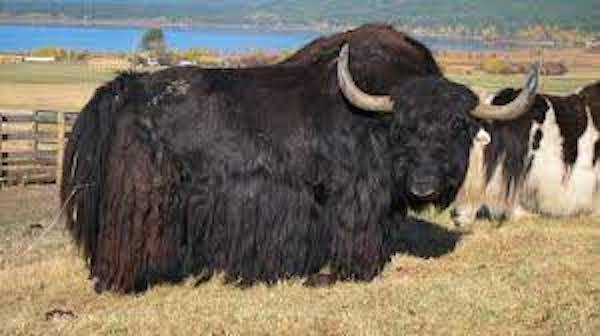
WHYC on the Forefront of Yak Sciences
RETHINKING 5 HETEROZYGOUS CATTLE ALLELES
By Lawrence Richards (2022)
“Let us look at an inherited neurodegenerative disease of the Central Nervous System that occurs in Charolais cattle identified as Progressive ataxia. It typically appears around 18 months and results in progressive ataxia with the end result requiring euthanizing. However it may take longer to express itself which restricts early phenotypic detection.”
- Lawerence G. Richards, WHYC Founding Member, Vice President, and Yak species expert
LIVESTOCK CONSERVANCY RENEWAL
Year 2 on the Conservation Priority List (CPL)
We submitted the WHYC Annual Report to the Livestock Conservancy (TLC) in February and got our response in April. Our association and the criterion we developed with TLC (in 2020), has been renewed in the Research Category of the Conservation Priority List (CPL). Wonderful support for Heritage Yak in 2022!
WHYC developed CPL criterion for the Heritage Yak Breed;
WHYC submitted the 2021 CPL Annual Report to the Livestock Conservancy in February, 2022;
Our TLC Criterion (2020) was approved and renewed in April, 2022;
We are the only association providing valid Heritage Yak Certification;
Look for the WHYC Quality Stamp. If it doesn't have the WHYC Certification Quality stamp, it's not verified as a Heritage Yak.
WHYC and UWM’s GENOTYPING TEAM
“Preliminary research suggests, Heritage yak may be of International significance.”
- Nicole Porter PhD, WHYC President
The World Heritage Yak Conservancy (WHYC) and the University of Wisconsin Madison's (UWM) YAK Genotyping Team (Kathib, Porter, Urbano Braz and Kalbfliesch) are conducting the largest study on the North American yak genome preformed to date, anywhere in the world. This study will only include pure blood yak that qualify as the Heritage Yak breed from the North American Yak population. The UWM Team will compare the genomes of these Heritage yak with several different Bovid species and several subspecies of yak. This will allow us to identify genetic markers (SNPs) that are specific to Heritage Yak. This will allow us to further understand the difference and similarities between the NA yak and Wild Type and Domestic yak on the QTP. Thanks to our friends at University of Madison!
WHAT COLOR ARE YAK?
By Lawrence Richards (2015)
“Coat Color is genetically predictable.”
- Lawerence G. Richards, WHYC Founder, Vice President, and yak species expert
In 2015, Lawrence G. Richards, presented “Color Inheritance in North American Yaks.”There are three colors that are recognized in North American yaks: Native Black, Imperial and Golden. Native Blacks are black hided animals with a grey or brown muzzle. Some individuals will show a grey or grizzly dorsal stripe. Native Blacks vary from a near dark black to brownish.” To read the full Coat Color Inheritance in North American Yak paper click here.
.
UNIVERSITY NEBRASKA COAT COLOR MARKERS
“We can now differentiate impurity based on individual markers.”
- Dr. Jessica Peterson, University Nebraska
The focus of the Animal Genetics and Genomics lab is to identify genetic variants that act to alter phenotypic traits and understand their mechanisms of function. Much of their work has informed WHYC in the quest to understand and identify genetic markers of diseases and traits such as fiber type and coat color. They were also central to the efforts of WHYC to upgrade the current genetic test to 130 SNP markers. Thanks to our friends at the Animal Genetics and Genomics lab!
WHY ARE YAK ENDANGERED?
“At a time when species extinction on the planet has accelerated, we can work together to snatch this one back from the edge of extinction.”
- Dr. Barney Long, WWF Asian species expert
The North American Yak is an opportunity to preserve important biodiversity in this sequestered, remnant population. WHYC has partnered with the Livestock Conservancy to ensure the preservation of the North American yak breed. Thanks to our friends at The Livestock Conservancy!
UNIVERSITY OF QINGHAI LIVESTOCK CONFERENCE
“The pure blood heritage yak is endangered in North America.”
- Dr. Nicole Porter, WHYC President
In 2019, Nicole Porter, PhD presented the Keynote Address at the Livestock Conference at Qinghai University (Titled: North American Yak Genome). Qinghai University is the largest yak research center in China studying Yak on the Tibetan Plateau and the conference attracted representatives from all over China and Europe. We are very grateful for their wonderful hospitality and look forward to future research collaborations. Thanks to our friends at University of Qinghai!
UNIVERSITY OF MICHIGAN’S MICRONUTRIENT DATA
“Copper is the only Trace Nutrient Mineral consistently deficient in Tibetan Yak in the US.”
- Dr. Mike Buchwaltz, Yak nutrititon expert
This test is an economical way for breeders to confirm that their yak are receiving adequate nutrition in their diet, and to trouble shoot health issues that may arise.
The new test (Tissue Minerals, code 50254) includes all of the minerals from the previous Trace Nutrient Minerals: cobalt, copper, iron, manganese, molybdenum, selenium, and zinc. In addition toxic minerals, arsenic, cadmium, lead, mercury, and thallium, are included.
This research is provided by the Diagnostic Center for Population and Animal Health and WHYC. Please contact the Genome and Health Committee for additional information. Thanks to our friends at University of Michigan!
IS HYBRIDIZATION IRRESPONSIBLE BREEDING?
“Hybrids can be beautiful and functional. But Please, don’t breed hybrids with foundation seed stock. Keep them seperate.”
- Dr. Nicole Porter, WHYC president.
No, hybridization is not irresponsible in theory. In practice, yes, because there is no real mechanism to keep the mutated genome out of the seed stock breeding pool. In practice, it ends badly. The unusual spectrum of mutations inducing hybrid dysfunction is an important consideration. Transgressive expression in hybrids is of importance because it highlights possible changes in gene regulation linked to hybrid dysfunction.
For a practical example, the zubron is a cross between a cow and wisent. Sounds like a tricky cross, but WTH is a wisent? They are wild European bison that are now extinct. In the 50’s everyone was excited about this hybrids potential durability and resistance to disease, and they wanted the zubron to replace normal cows as a hardy and cheap alternative to cattle. But scientists couldn’t get a fertile zubron for another 20 years. In the meantime, conservation of the Bison screeched to a halt. Now were trying to reintroduce the wisent from a tiny captive population.
ARE COPPER DEFICIENCIES IN YAK DANGEROUS?
By Dr. Michelle Arnold (2018)
“Pilot data suggests Copper requirements may be higher in yak than other bovids.”
- Dr. Michelle Arnold, Yak nutrition expert.
In 2018, Dr Michelle Arnold presented on Copper Deficiencies in yak. Blood Trace Mineral Analysis of yak (Bos grunniens or poephagus gruniens) lack available reference ranges. However, these are practical and relatively inexpensive tests, using ICP/MS (Inductively coupled plasma/ mass spectroscopy) are fast, sensitive, and precise. In 2019, at the NWSS, Nicole Porter, PhD presented new preliminary data from University of Michigan that suggested that copper requirements are higher in yak.
If you have questions, please contact our Registrar, Brad Salvato, at info@heritageyak.com.











